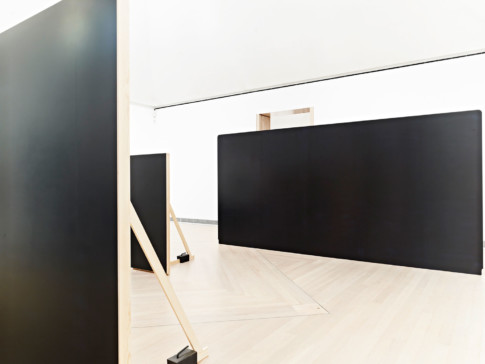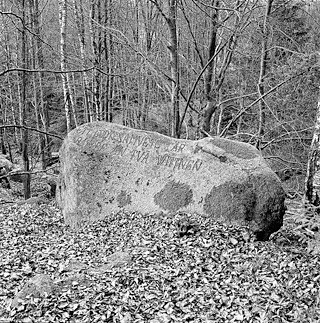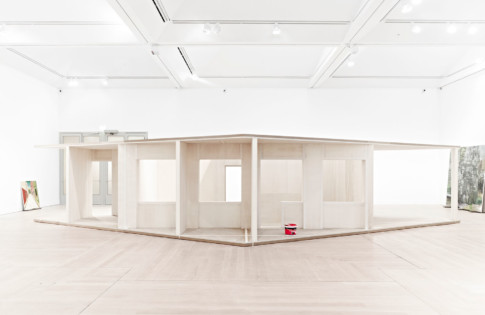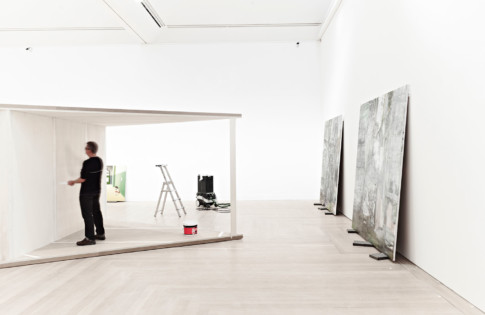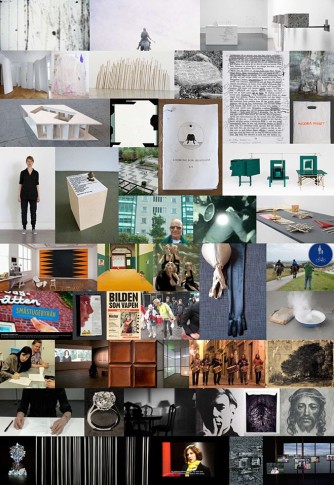
Föreläsning av Apolonija Šušteršič
Söndag 7 november kl 11-17
Plats: Modernautställningen 2010. Entrébiljett gäller (100 kr/80 kr)
Språk: engelska
Under relativt kort tid har forskning på akademisk nivå blivit ett nytt verksamhetsfält inom konsten. I Sverige finns det idag arton konstnärer som är antagna för doktorandstudier inom fri konst. I Modernautställningen 2010 har vi bett fem av dem att öppna upp sina pågående arbetsprocesser och presentera sina forskningsprojekt. Workshopen är öppen för besökare.
Apolonija Šušteršič about her workshop
I would very much like to discuss with you ideas around the production, presentation and post-production of visual research projects in relation to art institution such as Moderna Museet.
I believe that Hustadt project* presented in my research project at Moderna Exhibition 2010 rise many questions, which are not only specific to this project but can also be seen quite general. The project has been commissioned as a conventional public art project however during the process of production it started to take a De-tour with no predictable future. The issues found at place shaped my research and the whole process of production. The role of the context becomes very important as well as people’s participation within the HU_stadt project. The documentation of the project is limited when trying to present once experience and real situation at the time.
With-in the workshop I would like to discuss some of the questions below and create possible scenarios for future actions.
1. Production of an art research projects with-in an art institution: What could be the role of the art institution within the production of art research? Is there a specific knowledge collected within an art institution (besides art historical competence) that could support the production of knowledge within art research? Do we need to form a new type of art institution or perhaps re-form an old (modernist) type of the art museum?
2. Presentation / communication of art research projects with-in an art institution: How to (re)present an art project produced within / by a contextual research? How to present a process of the research (as part of an art project) within the art context – within an art institution? The product is not visible, it is not an object, it is immaterial, it is a process? What would be the role of the “white cube” in this case?
3. Collection / Archive of Art research projects with-in an art institution: Does art research projects need a specific Archive? Do they need to be collected in a specific way? How and where? How the knowledge is produced within art research projects accessible to the public?
* Hustadt Project
is a process … and a series of projects taking place in Hustadt, Bochum (Ruhr Area, Germany). As a process it is composed of several parts: the research of the existing situation that includes many formal and informal meetings, discussions, and workshops with people living in Hustadt. Out of this research the aim is to create the conditions for public participation (parallel to an official participatory urban planning process) and together with a group of inhabitants make a suggestion that can influence and definitely shift the official planning proposal for Hustadt.
The whole process has been leading into the drafting of a proposal for a Community Pavilion – Brunnenplatz 1 – a meeting place for people living in Hustadt; to encourage them to act and re-act on present conditions, outside of official social institutions, to create a place by themselves and for themselves. The Community Pavilion – Brunnenplatz 1 is a network of activities suggested by inhabitants themselves: a summer kitchen, a seating place, a small performance stage, an outdoor cinema, a bicycle-repair workshop, and much more. The goal is to create a place that would generate and inspire everybody living in the neighborhood.
** Contextual research
People are rarely conscious of what they do. When asked to describe their actions or lifestyle, the answers are often optimistic and inaccurate. An emphasis on context allows us to expose the patterns that underlie the reality of people’s behaviours and experiences. Drawing heavily on ethnographic techniques borrowed from anthropology, our contextual research immerses us in the world of consumers, users, stakeholders and thought leaders across diverse markets and geographies. For example, we don’t just interview hospital staff, we become the patient or doctor. We attempt to experience their life; take their viewpoint. We observe and shadow their tasks or the journeys they make. We still listen to their stories, but ground them in context. This research delivers a visually rich output of video and imagery for analysis.
Through collaborative synthesis and analysis we transform these complex experiences and stories of real people into meaningful patterns, insights and frameworks. These direct new opportunities for the development of products, services and communications.(http://simplerisbetter.wordpress.com/category/contextual-research)

